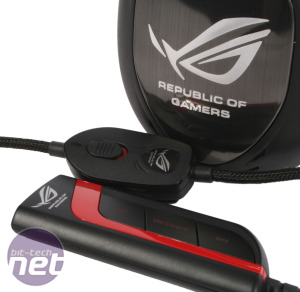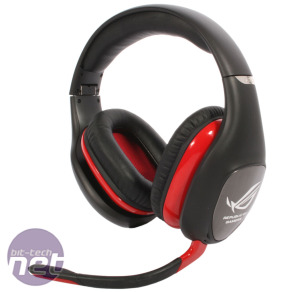
Asus ROG Vulcan Pro Review
Manufacturer: AsusUK Price (as reviewed): £95.99 (inc VAT)
US Price (as reviewed): Currently unavailable
As many of our readers will know, the original Vulcan headset is a firm favourite here at bit-tech HQ thanks to its comfort, design and, most importantly, its sound quality. Its active noise cancellation also does a fine job of eliminating background noise. Today we're looking at the Vulcan Pro, and as with the Orion Pro that we saw a few months back, the headset comes with one of Asus's ROG Spitfire USB soundcards, and is £25 more expensive than the original Vulcan as a result.
Opening the package reveals that the Vulcan Pro really is just the same headset as before with the USB soundcard thrown in, although the Pro currently comes with a free copy of Assassin's Creed III, which might appeal to some. The headset sports the same red and black aesthetic as before with stylish brushed aluminium effect earcups emblazoned with the ROG insignia (these are carbon fiber style in the normal Vulcan). It also comes with a smart carry case, and the earcups fold inwards so as to fit inside. Also included is the USB soundcard along with the cabling and detachable microphone, which is well built and flexible.
As before, comfort is wonderful with the Vulcan Pro. The earcups move to fit your head, cover your ears nicely and along with the headband are coated in ultra soft padding. The pressure exerted is also just right so as to keep noise in while allowing your ears to breathe, even during extended sessions.
The 30dB of passive noise cancellation is very apparent as soon as you don the headset, as the surrounding environment suddenly becomes much quieter. Flicking the ANC switch on the left earcup is another effect altogether, however. Focussed on eliminating low frequency noise like fans, the ANC is almost eerie in how much more sound it cuts out, although it does emit a touch of its own white noise. The surrounding hum of our labs became but a whisper, which is no small achievement given the multitude of systems running along with the air conditioning.
The ROG Spitfire USB soundcard is the same model found with the Orion Pro. It has a simple three button interface for implementing its audio effects (FPS, Surround and Amp), and you simply connect the headset to it via its regular 3.5mm jacks. Even without any audio enhancements active, the sound quality from the 40mm drivers is once again wonderful. The bass remains powerful without taking over the mid-range, which itself is clear and precise. The high-end too is well defined, and the excellent audio balance remains regardless volume, and makes music, films and games all sound rather lovely.


Click to enlarge - There's plenty of extension (left) and three separate areas of control with the Vulcan Pro (right)
Activating ANC still has a tendency to reduce the impact of the lower frequencies, and though this can be fixed with some EQ fiddling, we did choose to just leave it off for most of our time with the headset. Whether FPS mode is favourable will largely depend on personal preference and the game played, but it certainly does a noticeable job of bringing out high end sounds, which can prove useful in the rumbling battlegrounds of Battlefield 3, for example. Surround can be a convincing effect, but quite rarely, and is naturally no match for true surround sound. We liked the Amp mode before, and again it does tend to make sound overall a bit more dynamic, although not as noticeably as with the Orion Pro.
Though the addition of the Spitfire soundcard is no bad thing, from a design perspective it's at least questionable. With the earcup ANC control, in-line controller and soundcard, there are now three separate areas from which you can control the headset. It's a minor niggle, as you won't likely be reaching for them that often, but condensing everything into a single control unit might have been another way Asus could have differentiated the Vulcan Pro from its predecessor.
Conclusion
As it stands, the Vulcan Pro is a wonderful headset as it's very comfortable and sounds great. The simplicity and convenience of the Spitfire soundcard is something to be admired in these days of needlessly complex audio software, but equally the benefits it provides over the cheaper Vulcan are tangible at best. We always prefer good stereo sound to virtual surround sound, and the FPS and Amp functions amount to little more than EQ tweaks that do little to improve upon the already excellent sound. There's little wrong with the Vulcan Pro, it's just not worth the extra money over the Vulcan.-
Value21 / 30
-
Design26 / 30
-
Sound Quality38 / 40


MSI MPG Velox 100R Chassis Review
October 14 2021 | 15:04










Want to comment? Please log in.